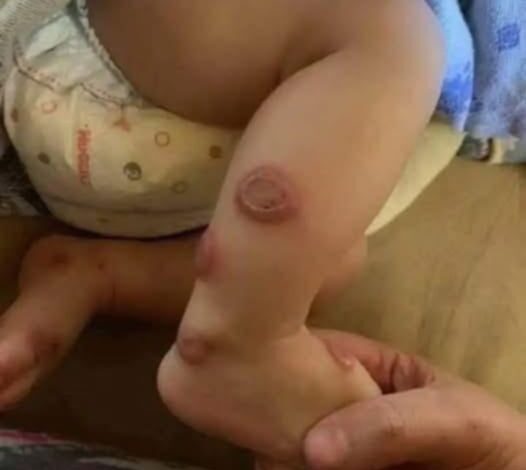Rare Skin Condition Alert: Doctor Reveals Critical Warning Signs You Must Know

Effective Treatment Options and Recovery
The standard treatment for Sweet syndrome involves oral corticosteroid therapy, which typically produces rapid results. Patients often experience:
- Significant pain relief within hours of treatment
- Complete lesion resolution within one week
- Full recovery with appropriate medical management
This patient’s positive response to corticosteroid treatment confirmed the diagnosis and demonstrated the effectiveness of prompt medical intervention.
Critical Differential Diagnosis Considerations
Healthcare providers must carefully distinguish Sweet syndrome from other conditions that may present with similar symptoms:
- Allergic skin reactions (urticaria)
- Contact dermatitis from environmental exposures
- Drug-induced skin reactions (toxicoderma)
- Cutaneous lupus erythematosus
Accurate diagnosis requires comprehensive medical evaluation, including detailed patient history, physical examination, laboratory testing, and definitive skin biopsy analysis.
Why This Discovery Matters for Patient Safety
This case highlights several crucial points for both healthcare providers and patients:
For Medical Professionals:
- Consider Sweet syndrome in differential diagnosis of acute skin reactions
- Maintain awareness that any medication can potentially trigger rare reactions
- Importance of prompt referral and comprehensive evaluation
For Patients:
- Report new skin symptoms immediately when starting new medications
- Understand that serious reactions can occur with any drug, including inhalers
- Seek emergency medical care for sudden, painful skin changes with fever
The Broader Medical Implications
Sweet syndrome can sometimes indicate underlying serious medical conditions, including:
- Hidden cancer, particularly blood cancers
- Autoimmune connective tissue diseases
- Inflammatory bowel conditions
- Various infections
Therefore, patients diagnosed with Sweet syndrome require comprehensive medical evaluation to rule out associated conditions that may need treatment.
Prevention and Awareness Strategies
While Sweet syndrome cannot always be prevented, patients can protect themselves by:
- Maintaining detailed records of all medications and supplements
- Reporting any new symptoms immediately to healthcare providers
- Following up with recommended medical screenings
- Understanding family medical history and risk factors
The Importance of Medical Reporting and Research
This case demonstrates why documenting rare medication reactions is crucial for advancing medical knowledge and patient safety. Healthcare providers play a vital role in identifying and reporting unusual drug reactions to improve future patient care.
Conclusion: Empowering Patients Through Knowledge
This remarkable medical case serves as a powerful reminder that rare conditions can affect anyone, and prompt medical attention can make the difference between minor inconvenience and serious complications. By understanding the warning signs of Sweet syndrome and maintaining open communication with healthcare providers, patients can ensure they receive the best possible care when facing unexpected medical challenges.
The medical community continues to learn from cases like this, improving diagnostic accuracy and treatment outcomes for future patients who may experience similar rare but serious medication reactions.